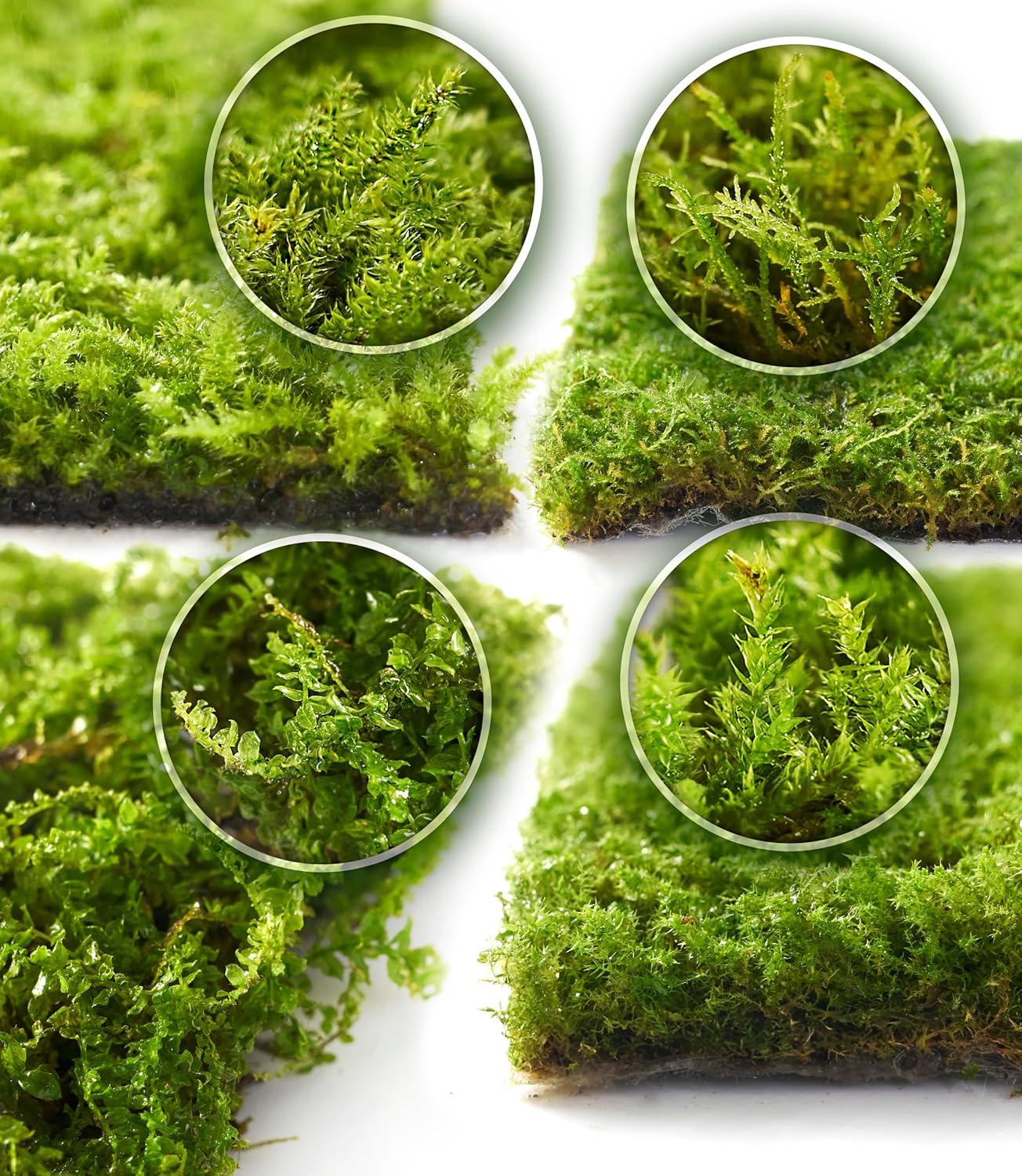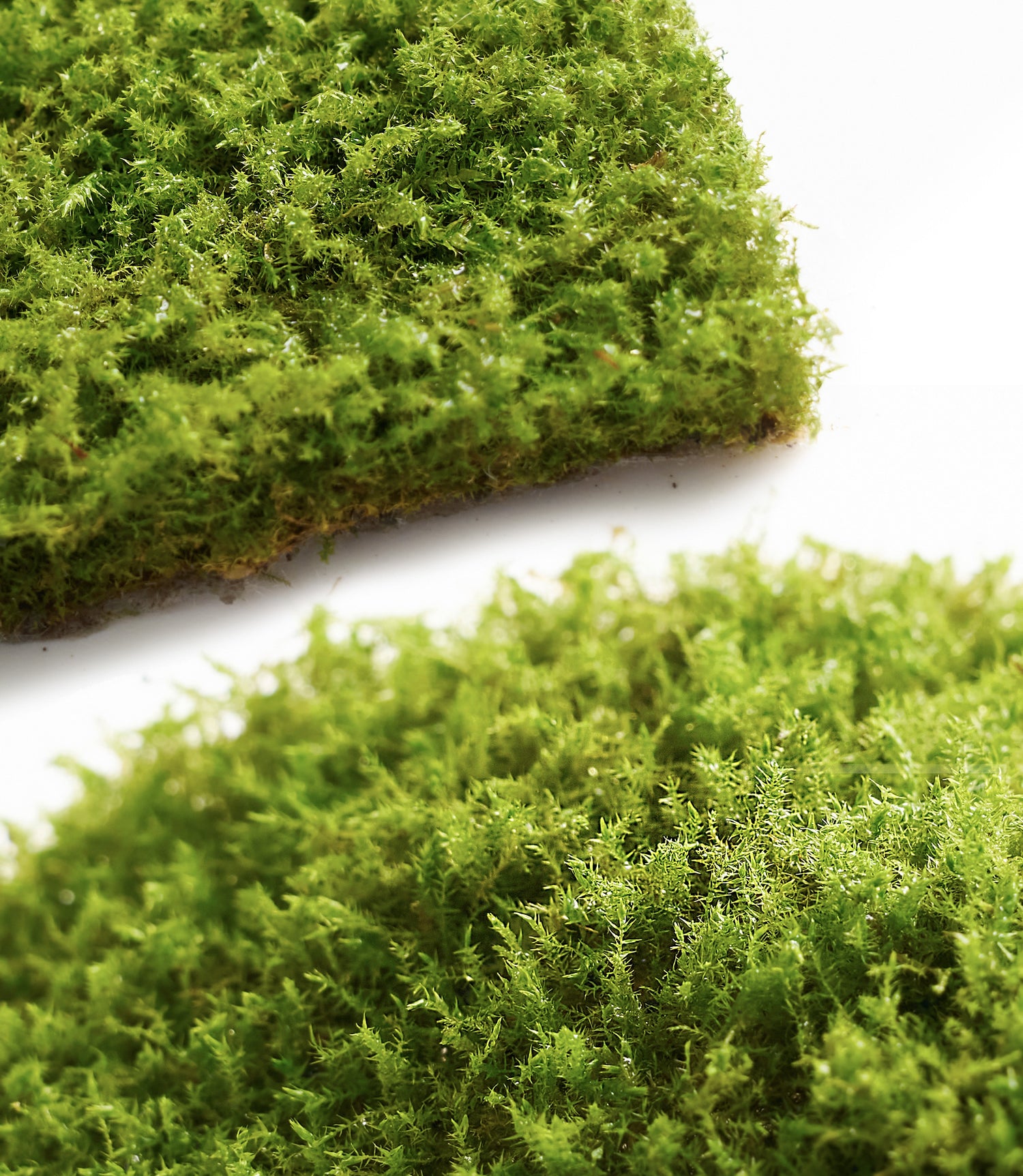The Complete Guide to Choosing Terrarium Containers: An In-Depth Look at Design from Getting Started to Aesthetics
Have you ever seen all sorts of bottles appear in the world of Terrarium?
Maybe it's more appropriate to call them containers, because some of them I don't really know what they be used before. Some of them are huge, some of them are not as big as your finger; some are square, some are as round as balls, and I've seen some of them look like a school bag, but that doesn't stop them from having their own unique charms. In the world of Terrarium, these containers are more than just a "thing for plants", they are the protective layer of the world you create, the canvas of the world you create, and the foundation of whether the whole "mini world" is alive and well.

Whether you are new to DIY for the first time, or a plant expert who has already set up a glass tank full of moss at home, learning how to choose the right container for your Terrarium is the first step for you to become a creator.
This article will comprehensively develop six aspects of container types, materials, opening types, functional details, aesthetic design, and use scenarios, combined with professional advice from several internationally renowned gardening platforms, to help you get a clearer picture of what kind of bottles you need, and provide practical and actionable reference suggestions for selection.
Before we start, let's make sure that the container is not a "plant" thing. It is:
1. Physical boundary: determines the circulation of water, air circulation, and the space for the plants to grow.
2. humidity regulation: closed bottles keep high humidity; open bottles are suitable for dry plants.
3. Visual guidance: the shape of the container determines the direction of the composition, e.g. tall bottles are suitable for vertical compositions, wide bottles are suitable for landscaped tiling.
4. Safety and protection: to resist dust, pets' interference, and effectively prolong the state of plants.
In short, the container is the shell and skeleton of the "small forest", which affects the internal environment and dominates the viewing experience.

Analysis of common container shapes and uses
Well, there are already two choices here, one open and one closed. This knowledge is talking about the environment of the Terrarium, in terms of the shape of the container there is a variety, if you want to use your home candy canes as a container is also possible. I listed some common containers and suitable plants.
|
Container Type |
Typical Shape |
Suitable Plants |
Recommended Uses |
|
Round Ball |
Perfectly round, flat ball |
Mosses, small ferns |
with lid can be made closed; hanging will be very nice. |
|
Cylinder |
Straight cylinder, top closure |
Clematis fern, pothos, Air plants |
Tabletop ornaments, display type |
|
Square/Polygonal |
Geometric Metal rim glass |
Succulent with mosses combinations |
Open landscape fixtures |
|
Fishbowl type Wide Tank |
Horizontal Expanding |
Groundcover Mosses, Landscape Composition |
Landscape Ecological Design
|
|
Teapot |
Jar with Lid and Handle |
Mosses, Fine Rooted Plants |
This one is very retro.
|
 Container Opening Types: Closed vs Open
Container Opening Types: Closed vs Open
Simply put, if the container you choose has a lid, it can be made closed, if it is open without a lid, it is open.
Closed Terrarium
Features:
- Sealed with a lid.
- High internal humidity, self-circulating system
Pros:
- Basically, no maintenance, remember to give it some sunlight and trim it if it grows too long, suitable for lazy people.
- Creates a "rainforest" like moist environment.
- Ideal for mosses, ferns, cold shade plants
Caution:
- Prone to "mold problem" or gas accumulation.
- It is recommended to open the lid once a week to avoid excessive moisture.
Representative Containers:
- Glass apothecary bottles
- Candle shade containers
- Spherical glass lidded jars
Open Terrarium
Features:
- No lids, or large openings.
- Well ventilated, water evaporates quickly
Advantages:
- Suitable for succulents, bromeliads and other plants that need a dry environment.
- Easy to clean and handle, especially for kids' DIY
Caution:
- Needs more frequent watering, e.g. twice a day. Needs more frequent watering, e.g. twice a day.
- Easy to collect dust. If you have a cat, it may be interested in the gadgets inside.
Representative Container:
- Geometric metal rimmed glass box
- Open-ended cylindrical container
- Fish Tank Conversion Landscape Tank
 The above is a variety of different containers and the most basic two types. I do not know if you have noticed, it seems that only glass containers, the material of the container, glass is not the only answer?
The above is a variety of different containers and the most basic two types. I do not know if you have noticed, it seems that only glass containers, the material of the container, glass is not the only answer?
Glass
The most used material, with the following advantages:
- High permeability, easy to observe the state of plants
- No harmful substances released, and ecologically safe
- High-quality appearance, which is conducive to creating a high-class "natural aesthetic".
Branching types:
- Ordinary glass: low price, fragile
- Borosilicate glass: heat and crack resistant, recommended
- Frosted glass: provides soft light and a sense of mystery.
Acrylic / Plexiglass
More and more new material is increasingly used in teaching, exhibitions and child-friendly Terrariums.
✅ Advantages:
- Lightweight and unbreakable: 30% to 50% lighter than glass, unbreakable, and suitable for families with children or pets.
- Processing flexibility: can be cut into various geometric shapes, support hollowing, embedded lights and other designs. We've also seen it in a bag, so you can take it out with you, super cool.
- The price is much cheaper compared to glass, especially suitable for team experience programs or cost control of large size landscape tanks.
⚠️ Cons:
- The surface is easy to scratch: the scratch resistance of the surface is much lower than that of glass, and fine marks may appear after a long time of use, affecting the view. You must know that the most beautiful moment of acrylic is the moment you just tear off the film!
- The surface is easy to yellow: prolonged use under strong UV exposure can cause yellowing, especially for low quality material.
- Airtightness is worse than glass: for closed Terrariums, the sealing is not as good as glass bottles, and water vapor is easy to leak.

�� Recommended use scenario:
- Terrarium classroom for children
- Large-scale miniature landscape models for display
- Commercial Terrarium that need to be transported (lightweight and unbreakable) can also have a lot of additional accessories installed on them, such as fans and light strips.
Reptile Terrarium
We see the Reptile Terrarium as a class of advanced containers that are both functional and display-oriented, especially for advanced terrarium enthusiasts or micro landscape creators.
Features:
- Large space, high freedom of layout: easy to create "forest", 'valley', "rainforest" and other themed landscapes.
- Plenty of accessories: often comes with sliding door, ventilation system, top opening lid, lighting position, etc.
- Suitable for moss, fern, drip moss scenery: due to the mature humidity control system, it can stably support complex plant ecosystems.
- Support "micro-environment simulation": such as heat lamps, atomizers, temperature and humidity probes, widely used in teaching or commercial display projects.

⚠️ Caution:
- The Volume is usually large, and not suitable for beginners as a first attempt container.
- More complex to maintain than simple glass jars, requiring multiple management such as temperature control, dehumidification, insect control, etc.
Recommended for users:
- Advanced players who want to upgrade the Terrarium into a miniature ecological landscape at home.
- Content creators who plan to brand or teach Terrariums.
- Players who like to "landscape" or combine with wet creatures (e.g. rainforest reptiles).
Materials are not recommended:
- Plastic containers: poor light transmission, easy to scratch, chemical residue.
-Ceramic containers: opaque, not conducive to light and humidity monitoring.
To summarize:
|
Material type |
Advantages |
Disadvantages |
Suitable for people
|
|
Glass |
Highly translucent, safe, elegant |
Fragile, heavy |
Beginners to advanced players
|
|
Acrylic |
Lightweight, cheap, shatterproof |
Easy to scratch, weak light transmission |
Teaching/children/transportation displays
|
|
Creeping pet tanks |
Professional systematic, controllable |
High cost, complicated management |
Professional scenery or commercial display players
|
Of course, we can also use the plate to do some combination of moss and flowers, or we can simply do moss balls, which are also very nice, except that this would be out of the scope of ecological bottles, and we can talk about these as well when we have chance.
With so many types, how should I choose?
What we need to establish is "beauty + easy to maintain", with this as the goal you need to choose from these three aspects.

|
Matching dimensions |
Specific performance |
Suggested solutions
|
|
People → Maintenance ability (maintenance) |
Busy office people |
Closed containers, automatic circulation system
|
|
People → Aesthetic style (beauty) |
Minimalist, Japanese style |
Spherical, columnar glass bottles
|
|
Bottle → Volume structure (beauty) |
Small mouth and deep bottle |
Moss-based, avoid large plants |
|
Plants → Growth habit (maintenance) |
Fond of dryness or fond of wetness |
Open (succulent) vs. closed (ferns)
|
As you can see, picking a container is no easy task. You pick the right one and your work is already half done.
The core attraction of Terrariums is that you are creating a "living miniature world". And the container is the boundary and display window of this world. A good container not only supports the growth of plants, but also amplifies your ideas, styles, and concepts, and is a medium for you to show your personalized aesthetics.
So don't underestimate each selection, it determines the playability, sustainability and ornamental value of your Terrarium.

Looking forward to seeing what you guys come up with. Send us your videos or put your work @ me.






